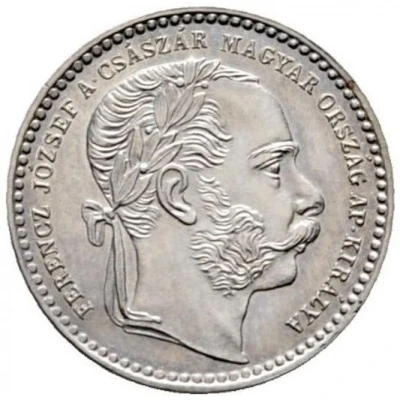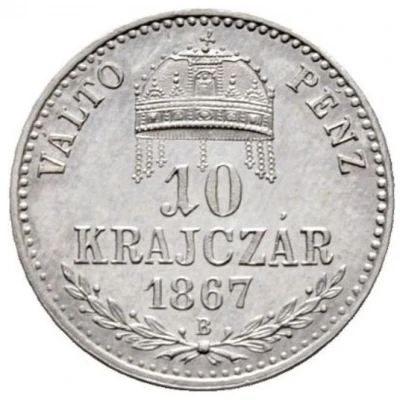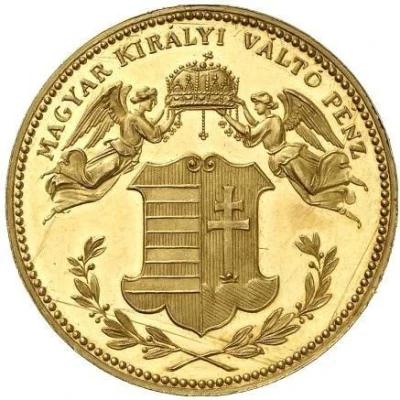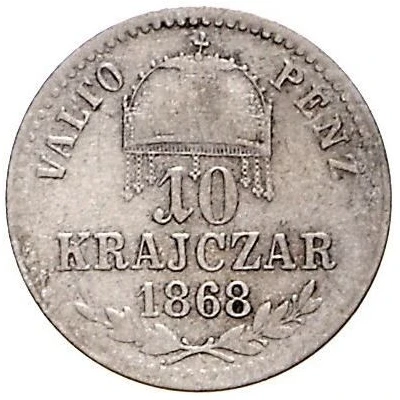


© H. D. Rauch
10 Kreuzers - Francis Joseph I Pattern
1867 year| Billon (.400 silver) | 1.66 g | 19 mm |
| Issuer | Hungary |
|---|---|
| King | Francis Joseph I (Franz Joseph I) (1848-1916) |
| Type | Pattern |
| Year | 1867 |
| Value | 10 Kreuzers (Krajczár) (0.10) |
| Currency | Florin (decimalized, 1857-1892) |
| Composition | Billon (.400 silver) |
| Weight | 1.66 g |
| Diameter | 19 mm |
| Shape | Round |
| Technique | Milled |
| Orientation | Medal alignment ↑↑ |
| Updated | 2024-10-05 |
| Numista | N#274425 |
|---|---|
| Rarity index | 100% |
Reverse
Script: Latin
Lettering:
VALTÓ PÉNZ
10 KRAJCZÁR
1867
B
Engraver: Johann Pfeiffer
Interesting fact
One interesting fact about the Pattern 10 Kreuzers - Francis Joseph I (Pattern) 1867 from Hungary is that it was designed by Austrian artist and engraver, Joseph Daniel Böhm. Böhm was a prominent figure in the field of numismatics and his designs were used on many coins throughout Europe during the 19th century. The coin's design features a portrait of Francis Joseph I, the Emperor of Austria, on the obverse side, and a depiction of the Hungarian coat of arms on the reverse side. The use of Billon, a metal alloy consisting of 40% silver and 60% copper, was a common practice during this time period, as it was a more affordable alternative to pure silver.



